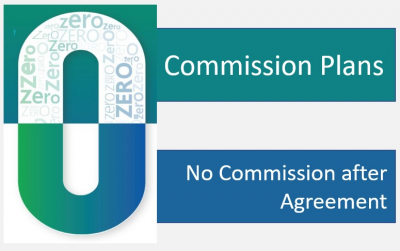
In this blog, you will learn about How to Become a Sub Broker in India?
Sub brokership business has been one of the most sought-after business models, especially if you want to work in the stock markets.
The whopping rise in the number of Demat account holders by 34% in 2022 suggests this market’s opportunities.
As per recent reports of December 2022, there were 108 million Demat accounts in India.
So if you are interested in starting your journey as a broker and setting up your own business, this article is just for you.
In this article, you will read about how to start as a sub broker business and grow in this industry.

Become a Sub Broker in India – Step by Step Process
Lets have a detailed understanding on how to become a sub broker in India? Follow the below-mentioned steps if you want to become a sub broker.
Step 1: Select a stockbroker:
Begin by choosing a stockbroker for your sub brokership venture. It’s essential to research and pick a reputable stockbroker known for their reliability and services.
Some reputable options in India include Motilal Oswal, Angel One, IIFL Securities, and Sharekhan.
Step 2: Connect with the stockbroker:
After selecting a stockbroker, you need to express your interest in becoming a sub broker. You can do this by visiting the stock-broker’s official website and filling out a form with your details.
Once you’ve submitted the form, their team will get in touch with you to discuss the next steps.
Step 3: Document Collection:
During your interaction with the stockbroker’s team, you’ll schedule a meeting where their representatives will collect all the necessary documents from you.
These documents are crucial for verifying your identity and eligibility as a sub broker.
Step 4: Transfer Security Deposit:
To operate as a sub broker, you’ll need to provide a security deposit, which is refundable. This deposit can typically be transferred online or paid by cheque.
It’s an important financial commitment and is used as a form of collateral.
Step 5: Document Verification by stockbroker:
After the security deposit is processed, your documents are forwarded to the stockbroker’s processing team. They will review your documents and may contact you to verify the information provided.
Once this step is completed, a file containing your documents is created and sent to SEBI (Securities and Exchange Board of India) and the relevant stock exchanges.
Step 6: Document Verification by SEBI and Exchanges:
SEBI and the stock exchanges will review and verify the documents submitted by the stockbroker. This thorough verification process ensures that all regulatory and compliance requirements are met.
Step 7: SEBI Generates Sub Broker Code
Upon successful document verification, SEBI generates a unique sub broker code for you. This code is essential for conducting transactions and maintaining regulatory compliance.
Step 8: Exchange Registration:
After obtaining the sub broker code, you can proceed to register with specific stock exchanges. This step allows your clients to trade and invest in the exchanges you are registered with.
Step 9: Receive Welcome Email and Kit
Once all these steps are successfully completed, the stockbroker will send you a welcome email. This email typically includes your sub broker code and access details to their dashboard.
Additionally, you will receive a physical welcome kit at your provided address, which may contain further instructions and information about your sub broker account. The entire process typically takes 10-15 working days.
Please note that for companies or firms, a corporate demat account is opened for sub brokership, while individuals are required to open a regular demat account, which is mandatory for the process.
Eligibility Criteria for Sub Brokers
To become a sub broker, there are specific eligibility criteria that must be met.
Age & Education – You should hold a graduate degree and be at least 18 years of age, while also being an Indian citizen.
Demat – You must open a demat account, and it’s crucial that this account is opened through the same stockbroker you’re working with.
NISM Certificate – Within a year of starting, you need to complete the NISM certification; failure to do so could result in your license being revoked.
SEBI Registration – Registration with SEBI is mandatory as well.
Investment – In terms of finances, you’ll need an initial investment, typically ranging from Rs.25,000 to Rs.1 lakh, with the security deposit being refundable.
Other Charges – Exchange charges, which can vary from Rs.500 to Rs.2,500, will also apply.
Office Requirement – Finally, having an office is a requirement to start your sub brokership journey. Although, you can request stock broker, to not establish office for the 1st year, they generally agree.
Documents required to Become a Sub Broker
You need to ensure you have the necessary documentation in order to become a sub broker.
Sub Broker Agreement – First, you’ll receive a sub brokership agreement from the sub broker, Just get notary done on Rs.500 stamp paper.
Then submit this document to the stockbroker you intend to work with.
Identity Proof – In terms of personal identification, you must provide proof of your identity. This can include documents like Aadhar card, passport, PAN card, or a driving license.
For individuals, you’ll need to submit your personal identity proof documents. If you are representing a company or business, then just submit identity proofs of all directors & partners.
Address Proof – Address proof is another essential requirement, and you can use documents like Aadhar card, driving license, passport, or a registered rental agreement to fulfill this requirement.
PAN Copy – A mandatory document in this process is a copy of your PAN card, which serves as a critical identification element.
Bank Details & Passport Size Photo – Make sure to submit passport-sized photos as well as proof of your bank account details. For bank details you can submit canceled cheque or the previous month’s bank statement.
Additional Document – For companies, additional documentation is necessary. Private companies should provide their Company Incorporation Certificate, while LLPs need to present their Partnership Agreement.
It’s important to note that all these documents should be self-attested, ensuring that they are legally valid and complete.
Similar Topics on Sub Broker
Capital requirements for Starting a Sub Brokership
To start a sub-brokership business, you need to invest a certain amount of money, including the franchise fee and the investment in the infrastructure.
Now let’s see these costs in detail.
Franchise fee: This is a one-time fee many brokerage house charge for offering the sub-brokership rights to the applicant.
Initial deposit: There is a security deposit amount that some of the stock brokers take from the sub-brokers, which is adjustable against transactions.
Registration expenses: As you need to register with the SEBI to become a sub-broker, you need to keep registration expenses aside. However, the registration expenses are reasonable, around Rs. 3000.
Office space: Another important initial and recurring investment is the office space security deposit and rent. If you own your own space, then the purchasing cost will be the expense in that scenario.
Office furniture, computers, and other amenities: A sub-broker must have their trading terminal, for which you need to set your office up properly. You need to include the cost of furniture, internet set up, phone lines and others.
Staff salary: Another recurring expense of sub-brokers is the salary they must pay to their employees and staff members.
Utility bills: The electricity bills, phone bills, internet charges, and other utility expenses will be monthly expenses as well.
So if you are opting for a sub-brokership business model, you need to consider all these expenses to start and run the business smoothly.
Check out these amazing Stock Broking Partner Programs
| Upstox Partner | Angel Broking Partner |
| Zerodha Partner | Motilal Oswal Partner |
| Sharekhan Partner | HDFC Securities Partner |
| 5Paisa Partner | IIFL Partner |
| Kotak Securities Partner | ICICI Direct Partner |
How to Become a Sub Broker in India? – Conclusion
Sub-brokers are the link between the stock brokers and the clients, and thus they play a huge role on both sides, and thus, the earning potential is also unlimited.
So, if you want to become a sub-broker, it is the right time to apply and venture into the market as the stock market is booming, and people are now exploring stock market investments and related asset classes.



Wonderful video
Thanks a lot